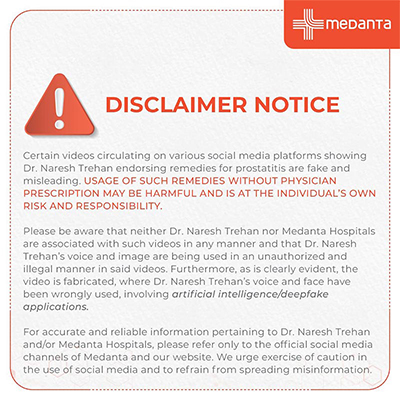When you suffer from myasthenia gravis, the communication between your body's nerve impulses and muscles becomes disrupted, causing weaknesses in the voluntary muscles. The gland in the chest area beneath the breast bone that makes the white blood cells is likely to play a crucial role in this autoimmune disorder. So surgical thymectomy is recommended for all patients suffering from MG. This surgery involves small incisions between the ribs, leaving the breastbone intact.
The robotic surgery involves a video system that provides 3D imagery and more flexibility in moving the instruments. Because of the flexibility and precision, robotic surgery also results in small incisions, which generally means less pain and a short hospital stay. Open thymectomy surgery takes a lot of time, and more extended hospital stays.
Types Of Myasthenia Gravis (MG)
There are different types of myasthenia gravis, some mentioned here.
Congenital MG
It is estimated to occur in 2 to 12 people per million addresses typically inherited instead of being caused by malfunction of the body's immune system. the specific type of MG happens due to genetic defects in the genes basically inherited from both the parents, which are involved in the nerve-muscle communication. There are different types of congenital MG depending on the type of genetic defect the patient harbors, and at which point of the nerve-muscle contact signaling cascade there are other impairments. Each specific class will be associated with a different set of symptoms.
Ocular myasthenia gravis
At least 10 to 40% of MG patients' muscle weakness and fatigue symptoms are restricted to the muscles that control the eye and eyelid movements. Patients going through this type of MG will likely experience eyelid droopiness and double vision as their eyes and eyelid muscles lose strength progressively.
Generalized myasthenia gravis
At least 50 to 80% of the patients with eye symptoms developed generalized MG. This type of disease is characterized by widespread muscle weakness and fatigue, not confined to the eye and eyelid muscles. A patient suffering from generalized MG needs to go for thymectomy surgery. In around 10% of these patients, muscle weakness spreads to the respiratory muscles or throat and jaw. This can make breathing completely difficult and lead to potentially life-threatening episodes.
Transient neonatal myasthenia gravis
This type of MG is scarce and is thought to occur in 10 to 20% of infants born to mothers with some ailment. The mother's self-reactive antibodies can be passed onto the unborn child during pregnancy, destroying receptors in the fetus.
Symptoms of Myasthenia Gravis (MG)
One of the most common symptoms of MG is weakness in your voluntary skeletal muscles which are the muscles under your control. The failure of the forces to contract usually happens because they cannot respond to the nerve impulses. Without proper impulse transmission, communication between your nerves and muscles would be blocked, and weakness would occur.
Symptoms are basically seen in the following body parts
Eyes
MG can cause drooping of the eyelids and double or blurry vision. You might experience overall weakness in the muscles.
Face
Besides facial paralysis, MG might also lead to changes in facial expressions.
Throat
When MG affects the muscles of your thought, you might experience trouble talking, difficulty breathing, difficulty swallowing or chewing, and changes in your voice might also be seen.
Arms and legs
MG can also affect the muscles in your arms and legs, leading to symptoms like weakness in your fingers and hands and overall weakness in your legs. There can be problems walking up stairs or lifting objects.
Not every person would have every symptom, but the severity of the symptom basically increases with time if it is left untreated. So you can treat MG by going for myasthenia gravis surgery.
What causes the Myasthenia Gravis (MG)?
The exact cause of autoimmune disease, including MG, is unknown. MG might be triggered by a combination of antibodies or intermittent problems with your thymus gland.
Autoimmune disorders basically occur when the immune system mistakenly attacks healthy tissue. Antibodies in MG which are proteins that usually attack foreign or harmful substances in the body, attack the nerve cells.
Damage to the neuromuscular membrane reduces the effect of the neurotransmitter substance, which is essential for communication between the muscles and nerve cells—these results in muscle weaknesses. The exact cause is unclear to the scientists also. The experts offering thymectomy surgery suggest that some bacterial proteins might prompt the body to attack the neuromuscular membranes. Having a family history of the autoimmune disease might also increase the risk of developing an autoimmune disorder like MG.
Risk factors for Myasthenia Gravis (MG)
MG occurs in all ethnic groups and both genders. The fetus might acquire immune proteins in neonatal myasthenia from others affected with MG. Generally, cases of neonatal MG are temporary, and the child's symptoms usually disappear within two to three months after birth. Other children develop MG indistinguishable from adults. MG in juveniles is rare.
MG is not directly inherited, nor is it contagious. Occasionally the disease might occur in more than one member of the same family. Rarely do kids show signs of congenital MG or any other syndrome. These are beyond autoimmune disorders as they are caused by defective genes which produce abnormal proteins instead of those which typically would produce the enzymes that break down acetylcholine receptors and other proteins present along the muscles membrane. To know more about the risk factors for MG, you need to connect with experts offering thymectomy surgery.
How To Prevent Myasthenia Gravis (MG)?
There is generally no way to prevent MG, but you can surely take some steps to stop a flare-up of symptoms or even prevent developing some complications. These include practicing careful hygiene to avoid any type of infection and treating them if they do occur. It is always advisable to avoid extreme temperatures or over-exertion. Effective stress management can also help in reducing the frequency and severity of symptoms.
If you already have the conditions, you can take some steps to avoid an exacerbation, like can try to prevent infections with careful hygiene and avoiding sick people. It would be best if you treated infections in time. Learn effective methods to keep away your stress.
Diagnosis of Myasthenia Gravis (MG)
When it comes to myasthenia gravis diagnosis, your doctor will review your medical history and symptoms, besides conducting a physical examination. The doctor might also use different tests like neurological examination. The doctor might check your neurological health by testing your muscle strength, reflexes, muscle tone, sense of touch and sight balance, and coordination.
Ice pack test is done if you have droopy eyelids. The doctor will place a bag filled with ice on your eyelid, and after 2 minutes, the doctor will remove the bag and analyze the droopy eyelids for improvement. A blood test might also reveal the presence of abnormal antibodies, which disrupt the receptor sites where the nerve impulses side.
Your doctor might also ask you to go for repetitive nerve stimulation, as under this nerve study, doctors will attach the electrodes to your skin over the muscles to be tested. Doctors will send tiny pulses of electricity through electrodes to measure the nerves’ ability to send signals to the muscles.
Treatment and management of Myasthenia Gravis (MG)
Thymectomy is the perfect treatment available for MG. There are different treatments that can be taken alone or in combination to relieve the symptoms of MG. Your treatment will depend on your age, how severe or disease is, and how fast it is progressing. Medicines like corticosteroids are given in which the immune system limits antibody production. Prolonged use of this medication is not advisable as it can lead to severe side effects like bone thinning, weight gain, diabetes, and increased risk of infections.
Immunosuppressants are also prescribed by doctors as they will alter your immune system. These drugs, which can take months to work, might be used with corticosteroids. At times doctor might even suggest you go for intravenous therapy. Plasmapheresis is a procedure that uses a filtering process similar to dialysis. Your blood is routed through the machine, which removes all the antibodies which block the transmission of signals from the nerve endings to the muscle receptor sites. But the sound effects usually last only a few weeks, and repeated procedures can lead to challenges in accessing the veins for the treatment. Risks related to this treatment include a drop in blood pressure also.
Road to Recovery and Aftercare - Myasthenia Gravis (MG)
Once you have undergone the myasthenia gravis surgery, you need to understand how you can recover after that. You need to connect with your doctor as soon as possible if you have a fever or diarrhea, you have more weakness than usual, you are having problems swallowing, you're depressed, and you feel that you cannot cope with your ailments. If you have some queries or concerns about your conditions or care, connect with your doctor as soon as possible.
You can go for a Walker that might help you feel safer when you walk if you're at home. Chairs with side arms and rugged cushions may make it very easy to get up or out of the chair.
Myasthenia Gravis (MG) FAQ's
What is myasthenia gravis?
MG is a rare autoimmune disease that is caused by antibodies in your blood that block the regular communication between the muscles and the nerves. This weakness is likely to worsen with activity and improve with rest. The symptoms might fluctuate, and there might also vary in severity and occur in various combinations.
What causes MG?
MG results from abnormal immune system activity. People with other autoimmune diseases or abnormal thymus glands are most likely to have MG. Physicians suspect there might be a combination of one or other factors which trigger the onset of MG symptoms in the suspectable person.
Is MG inherited?
Generally, MG is not an inherited disease. But if one family member has an autoimmune disease, it is not unusual for other family members to also have the autoimmune disease. It is possible for the mother to pass her temporary form of MG to the newborn child.
What do you mean by thymus gland?
The thymus gland is present in the chest area beneath the breast bone and plays a crucial role in forming the standard immune system of your body during childhood. The gland is somewhat large in infants and grows gradually until puberty and then gets small and is replaced by fatty tissue as you age.
How can you treat MG?
MG can be treated with different drugs and other therapies, either in combination or alone. Treatment decisions taken by your doctor are considered after taking into account the severity of your disease, which muscles are affected, and your age.
What is the prognosis with MG?
MG cannot be cured, and many people with MG can live generally for the first one to three years when different symptoms often appear difficult. It can take time to work through other treatments to find what works best for you. MG is also known as the snowflake disease because its symptoms are different for every patient.
What makes MG even worse?
These factors can make MG symptoms worse, like stress, lack of sleep, pain, extreme hot or cold temperatures, including outdoor temperatures, hot showers, hot tubs, hot foods, and some chemicals like insecticides and lawn treatment.
Can you continue working with MG?
Yes, you can continue working with MG, but it all depends on the severity of your condition. If your MG is entirely active, you might need to talk to the employer to check if you can make temporary adjustments in the workload activities or hours. Some MG patients apply for and receive Social Security disability benefits.
Can you exercise during MG?
Yes, of course, you can exercise during MG, but you should do it within your limits. Do not exercise if you are weak short sessions with breaks are better tolerated as compared to long sessions. You should always start slow walking or use an elliptical machine and build gradually as you become stronger. You must stop and rest as soon as you feel tired.


